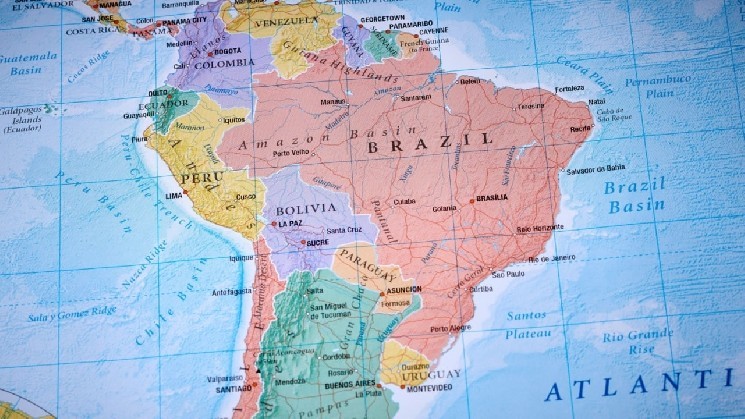Stablecoins: The Financial Backbone of Latin America’s Crypto Economy
In the evolving landscape of cryptocurrency adoption across Latin America, stablecoins have emerged as an unexpected hero in the financial narrative of the region. According to a comprehensive Latam Crypto 2025 Report recently published by Dune, a leading Web3 data platform, stablecoins have firmly established themselves as essential financial tools for both individuals and institutions throughout Latin America. What makes this trend particularly fascinating is how it reflects the region’s unique economic challenges and the practical solutions that cryptocurrency can offer beyond mere speculation. Between January 2021 and July 2025, stablecoins facilitated over $50 billion in value transfers across Latin America, with USDT (Tether) accounting for $32.4 billion and USDC following with $18.36 billion. These numbers tell a story not just of adoption, but of transformation—where digital currencies are becoming integrated into everyday financial activities rather than remaining on the fringes of the economy.
The rise of stablecoins in Latin America represents a significant shift in how cryptocurrencies are perceived and utilized in the region. While much of the global conversation around crypto focuses on volatile assets like Bitcoin and Ethereum from an investment perspective, Latin Americans have been quietly pioneering a more practical approach. As Dune’s report highlights, there has been “a broader change in the use cases driving exchange flows: away from speculative trading of volatile assets, and toward practical applications such as payments, remittances, merchant settlement, and on/off-ramping for dollar savings.” This evolution has been particularly pronounced over the last two years, with Latin America actually leading global market trends that are now becoming commonplace worldwide. The region’s early and enthusiastic embrace of stablecoins for everyday financial activities offers a glimpse into what widespread cryptocurrency adoption might eventually look like on a global scale—focused less on speculation and more on solving real economic problems.
The dominance of stablecoins in the Latin American crypto ecosystem is reflected in striking statistics: by July 2025, a remarkable 90% of all exchange transfer volume in the region involved either USDC or USDT. Looking at the broader picture for 2024, stablecoins accounted for 39% of all cryptocurrency purchases across Latin America, demonstrating their critical role in the regional digital economy. Even more telling is the situation in Argentina, where economic instability has driven even higher adoption rates—USDT and USDC together represented 72% of all crypto purchases in the country during 2024. These figures demonstrate how stablecoins have become essential financial tools in a region where traditional banking systems may be inaccessible to many, and where national currencies often struggle with instability and inflation. For millions of Latin Americans, stablecoins provide a reliable store of value and a means of conducting transactions that their local financial infrastructure might not support.
The infrastructure supporting this stablecoin movement reveals another layer to Latin America’s crypto story. While Ethereum remains the foundational blockchain for settlement across the region, other networks have carved out important niches in the ecosystem. Tron has established itself as the preferred network for low-cost stablecoin transfers, addressing a critical need in a region where transaction fees can make a significant difference to users. Meanwhile, Polygon has been steadily increasing its market share by focusing specifically on payment-oriented transactions. This diversification of blockchain infrastructure demonstrates how the Latin American crypto market has matured, with different platforms serving distinct needs within the broader financial ecosystem. Rather than one blockchain dominating all use cases, the region has developed a more nuanced approach where multiple networks coexist, each specializing in particular aspects of the financial experience.
The findings from Dune’s report align perfectly with observations from regional cryptocurrency exchanges like Bitso, which have been highlighting the connection between stablecoin adoption and real-world applications for years. What makes the Latin American experience with stablecoins particularly noteworthy is how it contrasts with cryptocurrency adoption in other regions. While much of North America and Europe initially approached cryptocurrencies primarily as speculative investments, Latin Americans quickly recognized their utility for solving everyday financial challenges. In a region where significant portions of the population remain unbanked or underbanked, where cross-border remittances are essential lifelines for many families, and where economic volatility can erode savings overnight, stablecoins offer practical solutions to pressing problems. The stability that these digital assets provide—typically pegged to the US dollar—creates a financial refuge that traditional systems have often failed to deliver for many Latin Americans.
The Latin American stablecoin story also reveals something profound about the future of global finance. As traditional financial systems continue to evolve and digital currencies become more mainstream, the Latin American experience offers valuable insights into how cryptocurrency adoption might unfold in other regions facing similar challenges. The preference for stablecoins over more volatile cryptocurrencies demonstrates that practical utility often trumps speculative potential when it comes to widespread adoption. For Latin Americans, stablecoins aren’t primarily investment vehicles but rather essential financial tools that enable participation in the global economy. As governments around the world consider central bank digital currencies and regulators work to create frameworks for cryptocurrency, the organic, bottom-up adoption of stablecoins in Latin America provides a compelling case study in how digital currencies can address real economic needs when traditional systems fall short. The region hasn’t just adopted cryptocurrency—it has adapted it to create solutions tailored to its unique circumstances, potentially charting a course that other regions might follow in the years to come.


